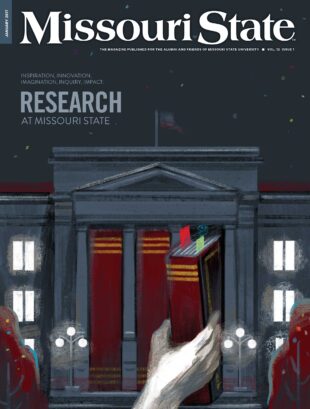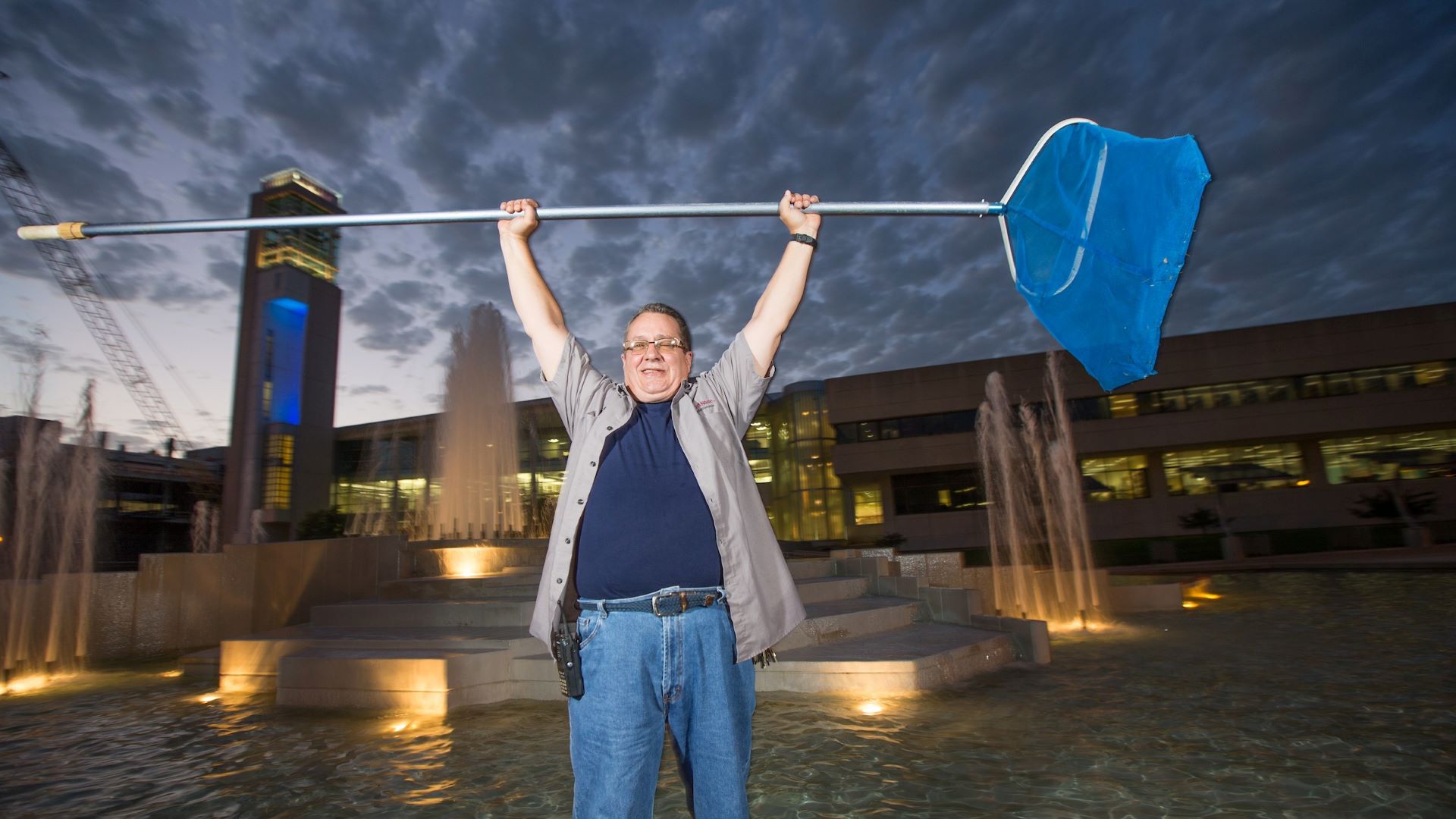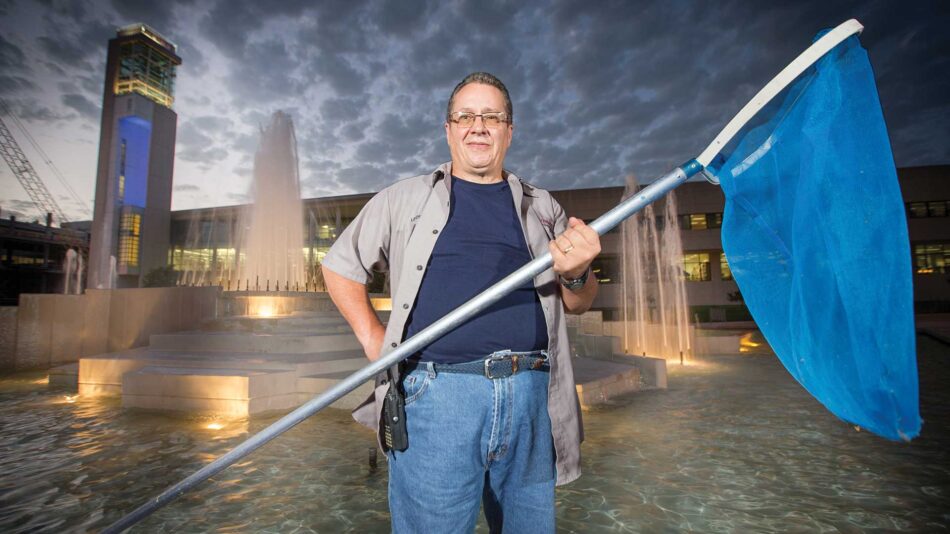
Leonard A. Haymans III prides himself on being called Missouri State’s “Fountain Guy.”
For almost 10 years, Haymans has been the maintenance general mechanic of the John Q. Hammons Fountains, by the Meyer Library, and the fountain in front of Juanita K. Hammons Hall for the Performing Arts.
Though a lot of people tell him he has the best job in the world — which he doesn’t deny! — he assures us that a great deal of work goes into fountain upkeep. (But that doesn’t keep him from jamming out on his guitar from time-to-time.)
“I have a lot of people tell me I’ve got the best job on campus. I tell them they can apply the same way I did: staple $100 on your application before submission (laughs). Only kidding.”
Here, he answers some questions that alumni and friends frequently post on social media or ask in conversations.
How many coins are thrown into the fountains each year?
When I first started working, we cleaned out $17 each year.
Then the economy tanked in 2008, and it’s like the fountain wishes followed the economy.
I’m getting about $7 to $8 each year now, including pennies, dimes, quarters and international coins.
What do you do with the fountain money?
Right now, I’m just letting it pile up in my mechanical room.
I don’t take the wishing coins out of the fountains until after finals. I want to make sure everybody gets every bit out of their wishes before I remove them.
My hope is to someday donate it to the Make-A-Wish foundation. I think that’d be a nice fit. I’d like those coins to keep on granting wishes.
What are the strangest things you’ve ever fished out of either of the fountains?
We’ve fished out crawdads, turtles, squirrels … We actually took and raised the crawdads for the first year. We kept them in a fish tank down in Temple basement. Well, until some catfish ate them.
In the Juanita K. fountain, I’ve removed three dead squid. No joke, I saw them just bobbing on the water. They were still in good shape, too. The person who dropped them in there must’ve gone to the seafood market and bought the freshest squid they could find that day.
Aside from animals, I’ve pulled out little panda bear earrings, graduation tassels … I’ve even got a ceramic cup on my desk that I found stuck underneath the corner edge of the fountain. I’m not sure if it was an offering to the “Fountain Spirit” or not, but it was rudimentary, artsy-looking and I liked it. So I kept it.
Do pranks involving the fountains happen often?
Not really. About five years ago, though, I found soap bubbles blowing up past the first floor of the library. It looked like the world’s biggest washing machine!
And last fall, when the Kansas City Royals won the World Series, somebody dyed the JQH fountain blue.
Why do you not recommend dying the fountains?
The fountain seals are made of rubber, ceramic and metal, making them really delicate when it comes to certain dyes and food colorings.
(Dying the water) could cause them to deteriorate faster, wear faster or just mess them up in general. It’s a big job, replacing those seals.
Basically, seal replacement means a lot of hours of labor and a lot of expenses.
Why is it a bad idea to put soap in the fountains?
Soap bubbles effect the defoamer we put into the spas. And because it takes so much soap to make the fountains bubble, it causes the sand filters to clump so that we lose some of the filtration capabilities. Changing the sand filters is a labor-intensive job that I wouldn’t wish upon anyone.
Can people put their feet in the water?
I worry more about people climbing the fountains, for safety reasons. There’s a lot of ledges and tiers you could fall from and hurt yourself. There are sharp metal parts. You could end up spearing yourself.
But dangling your feet in? I don’t mind. I know people appreciate the fountains, which is why I like taking care of them.
However, if people have lotion on and decide to stick their feet in, that contributes to the impurities of the water. So, just keep that in mind and be kind to the fountains. Maybe shower first?
Oh, I’d keep dogs out of it, too. That’s more from a chemicals standpoint — it’s not good for the dogs.
There are rumors that the fountain by the library was modeled after one at Caesars Palace in Las Vegas. Is that true?
I’ve done a little research, and I think the company that designed that fountain had a role in the design of this one. So I believe there is a little bit of truth to that.





Leave a Reply